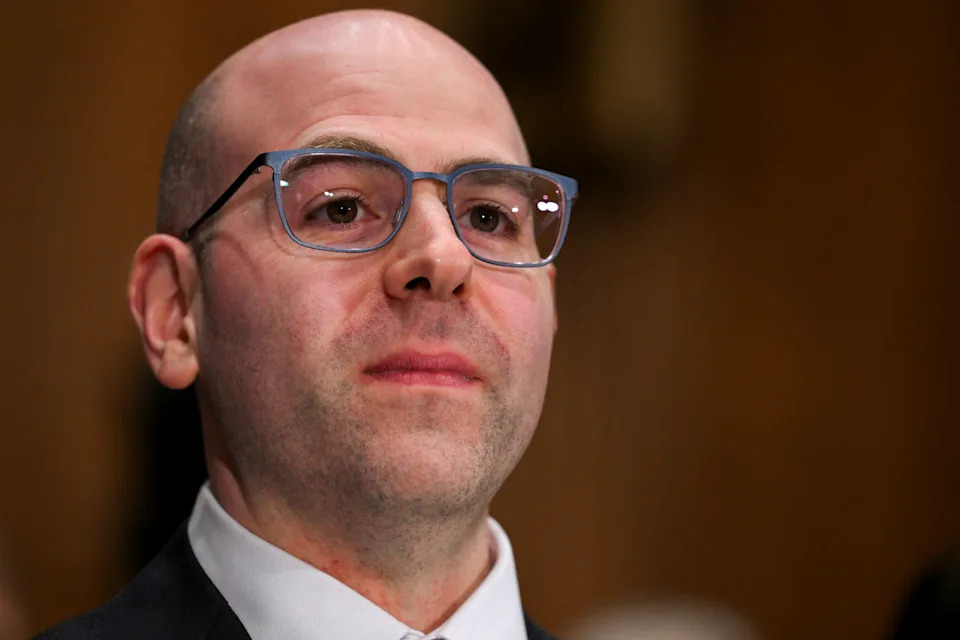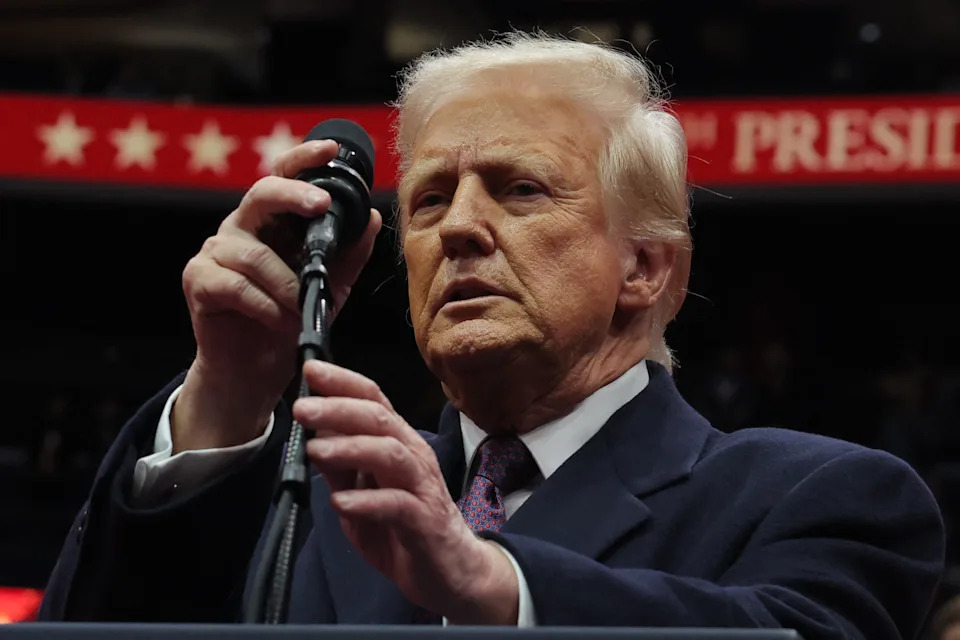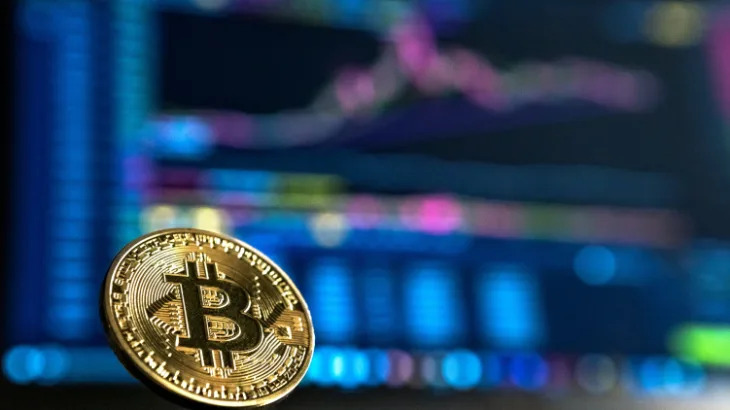What if tariffs are only the beginning? What if President Trump has a far bolder plan to reshape the US economy, regardless of the consequences?
Investors hope it isn’t so. But they’re still paying attention to a concept known as the “Mar-a-Lago Accord,” which would dramatically rewire global capital flows by permanently devaluing the US dollar, refinancing trillions of dollars of US debt, and putting the United States in a much more adversarial role with its trading partners. Most doubt it will amount to anything, but Trump is so unpredictable that investors are learning to prepare for the unthinkable.
The idea of a “ Mar-a-Lago Accord ” comes from Stephen Miran, who was a senior strategist at investing firm Hudson Bay Capital last November when he wrote a 41-page essay on “restructuring the global trading system .” Miran wrote from a Trumpian perspective, explaining how the incoming president’s fondness for tariffs and protectionism could be the basis for reshaping much of the global economy.
The paper probably would have gotten little notice, except that Trump tapped Miran to head the White House Council of Economic Advisers . He started the job this month. Trump himself hasn’t said anything publicly about Miran’s Mar-a-Lago plan.
But now that Miran is a Trump whisperer, investors want to know what he might be whispering. “Wall Street can’t stop talking about the Mar-a-Lago Accord,” MarketWatch declared earlier this month .
The basic premise behind Miran’s plan is that the US dollar has been overvalued for decades, leading to chronic trade deficits — and the migration of manufacturing out of the United States to other countries such as China. Reversing that imbalance would therefore require a devaluation of the US dollar, something Trump does seem to favor.

When the dollar is relatively strong, imports become cheaper to Americans, while US exports to other countries become more expensive. That shows up as a growing trade deficit in goods, as the gap between imports and exports grows. The goods trade deficit was $1.2 trillion in 2024, the highest ever and 175% larger than the deficit in 2000.
Trump thinks the growing trade deficit is inherently bad. Economists don’t necessarily agree .
The US economy is powered by consumption, and more imported products at lower prices boost the buying power of Americans. Running a trade deficit isn’t harmful if the US economy is otherwise healthy, with high levels of investment, innovation, and job creation.
Many experts also think a strong dollar is better for the United States than a weak dollar. "A Mar-a-Lago Accord would be pointless, ineffectual, destabilizing, and only lead to the erosion of the dollar’s pre-eminent role in the global financial system," economists Steven Kamin and Mark Sobel of the American Enterprise Institute wrote recently .
They argue that a strong dollar gives American businesses privileged access to overseas markets while enhancing economic stability at home.
It’s true that a lot of lower-level assembly-line work has left the United States and that manufacturing employment has dropped. But manufacturing has been declining for years as a percentage of output in all the world’s advanced economies as growth comes from technology and services. Since the 1980s, manufacturing as a share of US GDP has dropped from around 25% to less than 10%. Yet America’s industrial output is nearly as high as it’s ever been. Manufacturers simply make more with fewer workers due to automation, technology, and innovation.
If there’s a fatal flaw in Trump’s economic thinking, it’s his fetishization of manufacturing .
The service economy employs 86% of American workers today. Just 8% work in manufacturing. And the United States has a longstanding trade surplus in services, exporting more than it imports. "Are assembly jobs good jobs? Yes," economist Mary Lovely of the Peterson Institute for International Economics said on the latest episode of the Yahoo Finance Capitol Gains podcast. "But there are lots of other good jobs in the US."
Despite some rough patches, the United States has had the world’s most dynamic and durable economy for at least 40 years. If the United States has somehow been handicapped by a lost blue-collar economy and a gamed trading system, it’s a handicap any nation would gladly endure.
Drop Rick Newman a note , follow him on Bluesky , or sign up for his newsletter .
Trump, nonetheless, is basing his whole economic plan on boosting the manufacturing sector.
In the Mar-a-Lago plan, tariffs would only be the beginning. Devaluing the dollar would come next. To do that without printing money and triggering runaway inflation, the Trump administration would have to intervene in currency markets. If other nations happened to agree with Trump’s plan to devalue the dollar, the signatories could all gather at Mar-a-Lago and ink an accord similar to other marquee events in financial history.
Voluntary agreement is unlikely, however, since trading partners would end up at a disadvantage. “The circumstances do not look good for a voluntary currency agreement,” Capital Economics explained in a recent analysis of the idea. “But a coercive deal forced on others by the US using threats or inducements may be possible.”
A “coercive” deal would involve some way of reducing the flow of foreign money into US dollar assets, especially Treasury securities. Miran, for instance, suggested a new user fee on some foreign purchases of Treasurys, which would reduce demand for Treasurys and weaken the dollar. But that would force interest rates higher in the United States, and Trump wants lower rates, not higher ones.

So there would have to be some corrective for rising rates.
One concept here is that the Trump team could somehow force current foreign holders of Treasury securities, which have a maximum maturity of 30 years, into a new “century” bond with a 100-year maturity. The catch is that century bonds would be hard to trade in public markets the way Treasurys trade now. So there would have to be some new way of providing liquidity if century bondholders needed it, such as short-term loans from the Federal Reserve.
Read more: What are bonds, and how do you invest in them?
There are other twists and wrinkles. Trump, for instance, has talked about establishing a US sovereign wealth fund, which, if it ever existed, he could use to force the dollar lower by purchasing massive amounts of foreign assets. The United States could exploit its role as a defense guarantor for nations such as Taiwan, South Korea, and much of Europe to try forcing them into buying century bonds. Trump could also dangle tariff relief as an incentive for foreign help devaluing the dollar.
If this scheme sounds remarkably convoluted, well, it is.
“There’s no easy road to dollar weakening,” Oxford Economics said in a March 20 report. “Achieving the size of depreciation that we think would be needed to have a significant impact on the trade deficit would involve swimming against a strong tide. The costs imposed on the economies and financial markets in the US and beyond could be large.”
Those costs would most likely include sharply higher prices for both imported and domestic goods, higher interest rates, and whatever economic damage the disruption might cause.
A worst-case outcome would be wrecking investor confidence in the sanctity of US Treasurys, which could happen if the United States did anything markets interpreted as a default, or refusal to pay, what Treasury holders are legally entitled to. That would devalue the dollar for sure, but at the devastating cost of much higher rates on Treasurys to compensate holders for the higher risk of losing their money. If that happened, US government borrowing costs would explode, and the gigantic national debt, now $36 trillion, could quickly become unsustainable.

Economists also point out that there are better ways of addressing some legitimate problems in markets. One reason the dollar might be slightly overvalued today is the sheer amount of debt the Treasury has issued to finance annual deficits that now run close to $2 trillion per year. “If the reduction in US domestic demand were done via fiscal tightening, that would have the added benefit of putting the US public debt onto a more sustainable path,” Capital Economics said.
There are also real casualties of global trade, including American manufacturing towns that lost employers with nobody to take their place. Luring growth industries such as green energy, data centers, warehousing, and healthcare to such areas would likely be more effective than trying to hold onto the enterprises of the past. There’s also an ongoing need for tradespeople and a mismatch between the skills companies need and the skills workers have that policymakers could do a much better job of reconciling.
Trump, of course, sees tariffs as a kind of multitool that can solve many problems, including some that might not be problems at all. Investors generally dislike Trump's tariffs, which have dented stock values and raised new inflation fears.
But tariffs may be tame medicine compared with other potions Trump might try to brew up.
Rick Newman is a senior columnist for Yahoo Finance . Follow him on Bluesky and X : @rickjnewman.
.





